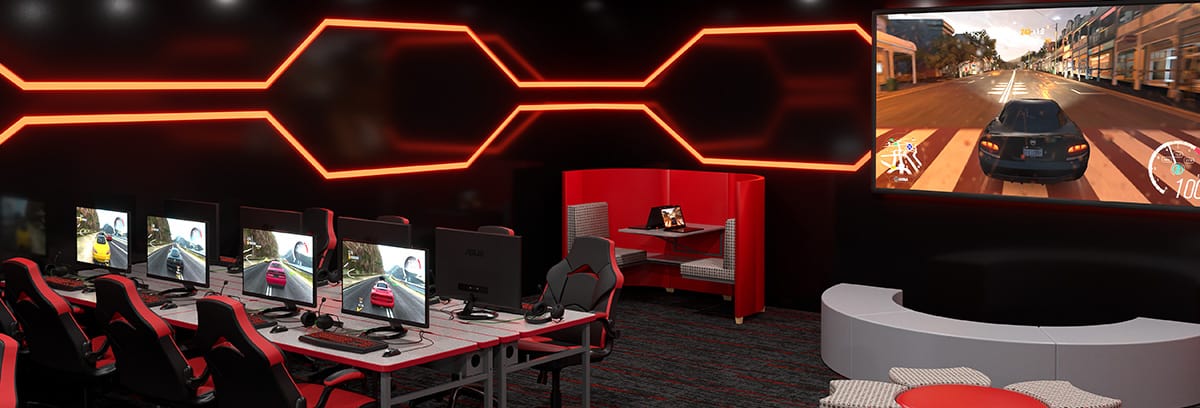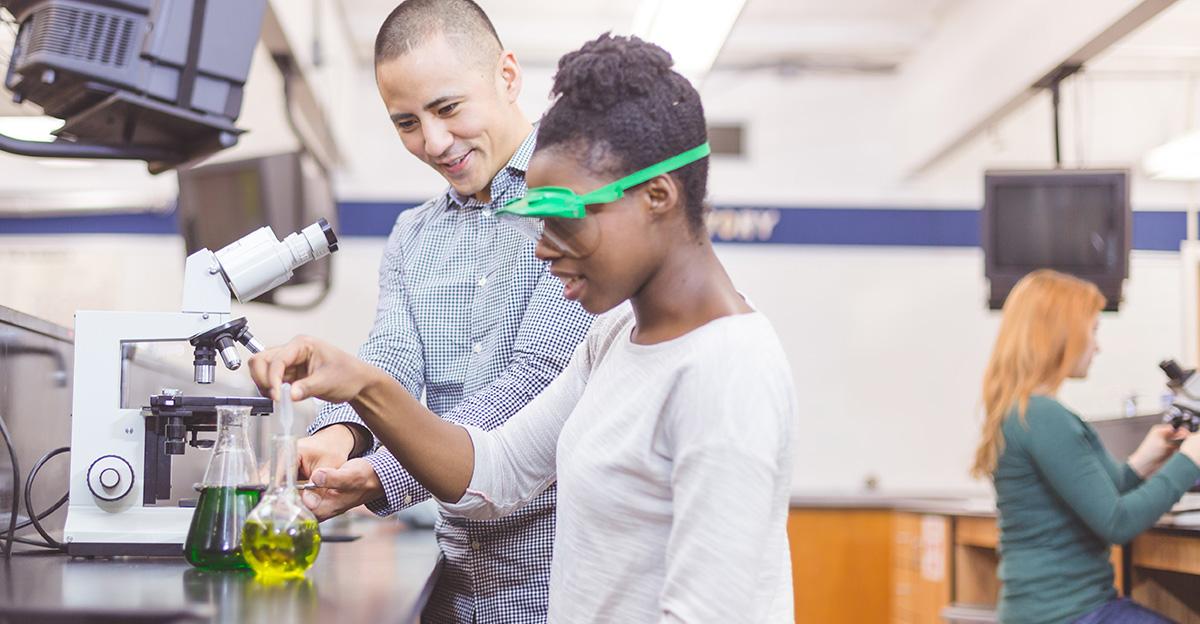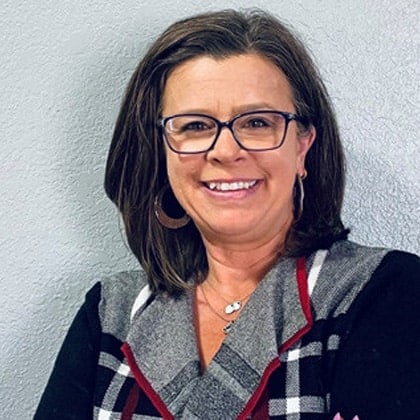We know the design of a classroom significantly affects the type and quality of the learning experiences that students have in that environment—and therefore the educational outcomes that students achieve.1
The same holds true for other school spaces, too. A well-built space is one that is carefully designed to support its intended purpose. As architect Louis Sullivan said many years ago, “Form follows function.” When designing specialty spaces created for very specific purposes, K-12 leaders must begin with these purposes in mind and then design, furnish and equip these spaces in a way that will achieve these objectives.
Here are some examples to inspire you.
MAKERSPACE
Makerspaces have become important environments for supporting hands-on learning and innovation. Research shows how powerful learning can be when students are encouraged to create, experiment and discover for themselves instead of just absorbing information from their teacher.2
Integrating a makerspace into education requires a well-equipped space that can support student innovation. When designing a makerspace around the objectives you have for this environment, here are some key questions to guide you.
• Users: What are the ages and grade levels of the students who will be using the space? Answering this question will help you choose age-appropriate tools, materials and furniture for your makerspace.
• Purposes: How do you envision students using the space? Will they need separate areas to design, build and test their creations, or will tables for making things be sufficient?
• Learning goals: What classes and subject areas will use the makerspace? What skills are you hoping students will learn? What types of projects do you think will help students acquire these skills— and what tools and materials will students need for these activities?
• Storage and safety: How will you safely store tools and materials? What special safety equipment will you need? How will the design of the space support the safe and responsible handling of tools and equipment?
ESPORTS VENUES

Esports, or competitive video gaming, has become quite popular in recent years. Esports can be a great way to engage more students in an extracurricular activity, which has proven academic benefits. It helps students learn essential 21st-century skills like problem solving, teamwork, communication and leadership. It can even prepare students for careers in the $300 billion-a-year gaming industry.3
To create a successful esports program, you’ll need a well-equipped space for practicing and competing. Here are some key questions to guide your design of an effective esports facility.
• Users: How many students will be participating in esports at your school? Of these students, how many will be actual players — and how many will fill other roles on the team, such as “shoutcasting” (broadcasting) live matches?
• Purposes: What types of spaces will you need? Will your esports arena be used only for practicing and competing, or would you also like to support live viewing of matches with an area for spectators? Will you need spaces for shoutcasting and for players to relax or discuss strategy between matches?
• Furniture and equipment: How will you ensure the comfort of players during matches? What technologies will they need to be successful? What technologies are required for shoutcasting and live viewing of matches?

CTE LABS
Career and technical education (CTE) prepares students for both college and a career. Because it helps students understand the connection between what they’re learning and how these lessons apply within the real world, CTE tends to engage students more deeply in their education.4 It also equips students with employability skills they’ll need for success in the workplace—which can lead to higher earnings.5
A successful CTE program requires careful consideration of the goals for the learning environment. Here are some key design questions.
• Users: What are the ages and grade levels of the students who will be using the space?
• Learning goals: What career clusters and pathways are you looking to prepare students for? What skills do they need to learn for these fields, including both technical and employability skills? What types of learning experiences and projects should students engage in to learn these skills?
• Equipment and technologies: What industry-specific equipment and technologies do professionals in those careers use every day? Are you working with industry experts to ensure that students have access to the latest equipment and technologies used in those careers?

Outdoor learning has gotten a huge boost as K-12 leaders have sought to protect students and staff during the pandemic. But there are significant benefits to learning outdoors that go beyond health and safety.
In fact, learning outside has been shown to reduce stress,6 improve students’ focus and raise achievement7—and K-12 leaders would be wise to provide outdoor learning opportunities for students long after COVID is over.
To support effective outdoor learning, you’ll need external spaces that are carefully designed and furnished for success. Here are some questions to consider.
• Users: What grade levels will be using outdoor learning spaces, and what age-appropriate furnishings and equipment are required?
• Purposes: Will these spaces be used for instruction, recreation or both? What do you hope to accomplish with these spaces?
• Learning goals: What classes and subject areas will use outdoor learning spaces for instruction? What types of learning activities will take place there, and what furniture, equipment and materials will this require?
BEGIN WITH THE END IN MIND
In all cases, designing effective specialty spaces begins with understanding the purposes you have in mind for these environments. Once you’ve articulated your goals for the space, you can use these goals as the basis for a successful design.
To learn how the School Specialty Team can help you design, furnish, and equip future-ready CTE environments, please contact your School Specialty Representative.
Dr. Sue Ann Highland
Sue Ann Highland, PhD, is the National Education Strategist for School Specialty. She has more than 25 years of experience as an educator, administrator, and consultant with school systems across the United States, with broad expertise in designing and creating highly effective learning environments.
Read more by Dr. Sue Ann Highland–>
- Peter Barrett et al., “The impact of classroom design
on pupils’ learning: Final results of a holistic, multi-level analysis,” Building and Environment, Vol. 89, July 2015, retrieved from https://www.sciencedirect.com/science/article/pii/S0360132315000700. - Aaron Aupperlee, “New Research Shows Learning Is More Effective When Active,” Carnegie Mellon University, Oct. 4, 2021, https://www.cmu.edu/news/stories/archives/2021/october/active-learning.html.
- Simon Read, “Gaming is booming and is expected to keep growing. This chart tells you all you need to know,” World Economic Forum, July 28, 2022, https://www.weforum.org/agenda/2022/07/gaming-pandemic-lockdowns-pwc-growth/.
- Linda Jacobson, “Study finds connection between CTE courses, graduation,” K-12 Dive, Oct. 31, 2017, https://www.k12dive.com/news/study-finds-connection-between-cte-courses-graduation/508470/.
- U.S. Department of Education (USDOE), “Bridging the Skills Gap: Career and Technical Education in High School,” Sept. 2019, https://www2.ed.gov/datastory/cte/index.html#data-story-title.
- Gwen Dewar, “Outdoor learning and green time: How kids benefit from learning and playing in nature,” Parenting Science, 2019, https://parentingscience.com/outdoor-learning/.
- American Institutes for Research, “Effects of Outdoor Education Programs for Children in California,” Jan. 7, 2005, https://www.air.org/sites/default/files/2021-06/Outdoorschoolreport_0.pdf.







Leave a Reply